Red Blood Cells
Red blood cells (RBCs), also known as erythrocytes, are the most common type of blood cell in the human body. They are responsible for transporting oxygen from the lungs to the rest of the body and carbon dioxide from the body to the lungs for exhalation. RBCs are produced in the bone marrow and have a unique structure that allows them to perform their essential functions.
Structure of Red Blood Cells
RBCs are small, biconcave disc-shaped cells that lack a nucleus and most organelles. This unique structure provides a larger surface area for oxygen and carbon dioxide exchange. The absence of a nucleus allows more space for hemoglobin, the protein responsible for binding oxygen and carbon dioxide.
Function of Red Blood Cells
The primary function of RBCs is to transport oxygen from the lungs to the body's tissues and organs and to carry carbon dioxide from the tissues back to the lungs for exhalation. This process is facilitated by hemoglobin, which binds to oxygen in the lungs and releases it in the tissues, while also binding to carbon dioxide in the tissues and releasing it in the lungs.
Life Cycle of Red Blood Cells
The average lifespan of a red blood cell is about 120 days. As they age, RBCs become less flexible and are eventually removed from circulation by the spleen and liver. The components of the old RBCs are recycled, and new RBCs are constantly produced in the bone marrow to maintain the body's oxygen-carrying capacity.
Study Guide
- What is the primary function of red blood cells?
- Describe the structure of red blood cells and explain how it is related to their function.
- Where are red blood cells produced in the body?
- What is the role of hemoglobin in red blood cells?
- Explain the life cycle of red blood cells and how they are removed from circulation.
◂Science Worksheets and Study Guides Seventh Grade. Ecosystems, food chains and food webs

 Activity Lesson
Activity Lesson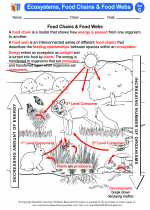
 Worksheet/Answer key
Worksheet/Answer key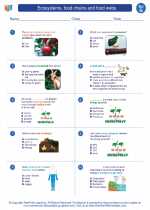
 Worksheet/Answer key
Worksheet/Answer key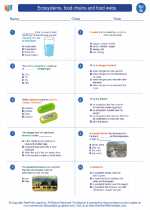
 Worksheet/Answer key
Worksheet/Answer key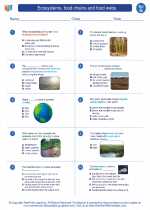
 Vocabulary/Answer key
Vocabulary/Answer key
 Vocabulary/Answer key
Vocabulary/Answer key
 Vocabulary/Answer key
Vocabulary/Answer key
 Vocabulary/Answer key
Vocabulary/Answer key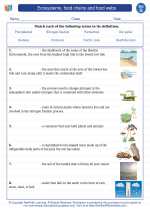
 Vocabulary/Answer key
Vocabulary/Answer key
